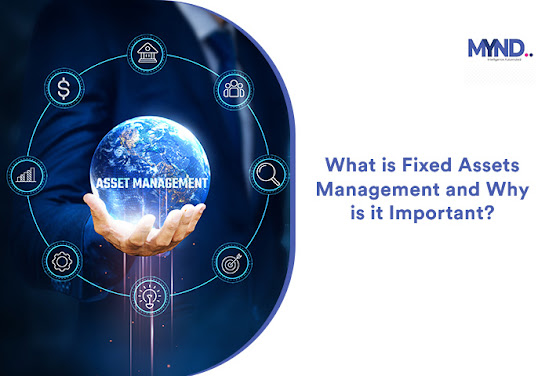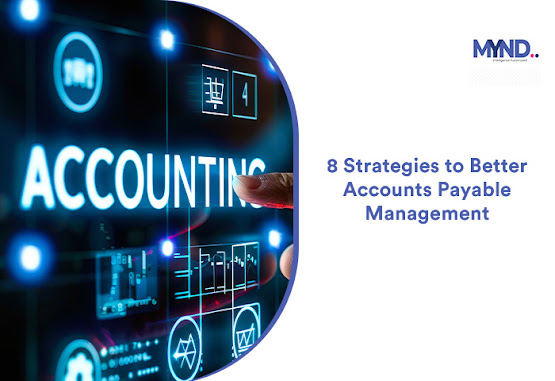What is Fixed Assets Management and Why is it Important?
 |
| What is Fixed Assets Management and Why is it Important? |
It can be quite difficult to keep track of all the tangible assets while
running a business. The efficient management of fixed assets is one important
factor that is frequently disregarded. Business owners can be losing out on
chances if they don't have a firm grasp of fixed asset
management and how important it is to their company's operations.
A Fixed Asset: What Is It?
In the business sector, fixed assets are long-term, tangible items that
a firm owns and uses to make money. Although they are essential parts of a
business's long-term operating infrastructure, they are not intended to be sold
off quickly.
Fixed Asset Management: What is it?
Tracking the purchase, usage, and disposal of an organisation's tangible assets
is the goal of fixed asset management.
How Does It Operate?
All fixed assets must be systematically tracked as part of fixed asset
management. Purchase date, price, location, depreciation rate, and condition
are just a few of the specific details that are provided by thorough records.
Several techniques, including barcodes and RFID tags, are used to do this.
Organisations can ensure that assets are available when needed by preventing
loss, theft, or misplacement with real-time asset tracking.
Two other duties of fixed asset management are cost-effective
asset maintenance and asset performance evaluation. In addition to planning and
scheduling routine asset maintenance to extend the asset's life and
performance, it can find less useful or outdated assets that can be disposed
of.
Essential Components of Fixed Asset Managment
It's time to understand the core aspects of effective asset management.
- Inventory
Tracking:
Maintaining an accurate and up-to-date inventory of fixed assets is
crucial not only for operational efficiency but also for ensuring
financial health.
- Depreciation
Calculation: Depreciation is one of the most important financial reasons
businesses track their physical assets. Depreciation refers to the value
that a fixed asset loses over time.
- Scheduling
Maintenance: Optimising fixed asset management greatly depends on
routine maintenance. Business operations can extend asset life and improve
operational efficiency by planning and following periodic maintenance.
- Asset
Disposal: Think
about things like recycling, resale, or direct disposal when it comes to
getting rid of assets at the end of their life cycle.
The Advantages of Managing Fixed Assets
Effective fixed asset management offers several advantages that
can have a big impact on the company's financial performance. Let's see what
businesses stand to gain:
- Improved
Asset Utilisation: It avoids circumstances in which assets are underutilised or
lying idle as a result of oversight. Businesses can make sure that their
assets are being used to their full potential by routinely monitoring and
evaluating how they are being used.
- Savings
on Costs: By
keeping track of assets and performing regular maintenance, one may
prevent unplanned repairs or replacements and make well-informed
judgements about whether to replace them before they become a problem.
- Decrease
in Loss and Theft: Since the location of every item is known and tracked, asset
monitoring will serve as a deterrent, greatly reducing the likelihood of
asset theft and misplacement.
- Making
Better Decisions: Strategic choices on when to buy, lease, sell, or dispose of
assets may be guided by thorough and up-to-date asset data, such as the
performance and state of their fixed assets.
Challenges While Managing Fixed Assets
Till now businesses have learnt about what fixed asset management is and
other aspects of it. Now it's time to discuss challenges that might come while
managing it. Below are some of them:
- Creating
customisable and efficient reporting
- Getting
rid of manual errors and inefficiencies
- Maintaining
precise inventory records for fixed assets
- Handling
growing and evolving data
- Resolving
the shortcomings of the ERP system
One of the best ways to manage fixed assets and deal with all these
challenges is fixed asset management software. This program was
developed to help businesses track, manage, and report on their fixed assets
during the course of their operations. This program automates a number of asset
management procedures, such as acquisition, depreciation, and disposal.
There are many fixed asset
management companies that offer software for this fixed asset
management.
Mynd Integrated Solution Pvt. Ltd. is one of the companies that offer fixed
asset management software. Through it, Mynd offers comprehensive services
covering capitalisation, lifecycle management, physical verification, tagging,
and process setup. It helps set up quantitative controls on fixed assets to
ensure adherence to best practices. By using automation, it ensures effective
tracking, management, and compliance of fixed assets across group companies or
individual branches, along with asset verification. It makes managing fixed
assets and balancing them with the books easier, which helps to prevent
mistakes in reporting and audits.
Conclusion
Effective fixed asset management
is vital for organisations to optimise their asset utilisation, maintain
compliance, and make informed financial decisions. But managing it can be a
challenging task for businesses.
Businesses require a reliable fixed asset management system to
effectively manage their assets. Specialised software designed for this purpose
can significantly improve asset management.
Mynd Integrated Solutions provides fixed asset management software that helps businesses track, manage, and verify their assets. It automates processes like capitalisation, lifecycle management, and physical verification, ensuring compliance and accuracy. By streamlining asset management, Mynd helps businesses avoid errors in reporting and audits.



Comments
Post a Comment